
Middle-term operation performance of QKD over 90 km
Preliminary Report : Middle-term operation performance of long-distance quantum key distribution over a field-installed 90-km fiber-optic loop
1. Introduction
Here reports on the middle-term operation performance of the differential phase shift quantum key distribution (DPS-QKD) system which is incorporated with the test-bed fiber-optic network installed over Tokyo metropolitan area [M. Sasaki et.al., Opt. Express 19, 10387 (2011)]. Completely free-run operation over 11 days was demonstrated for long-distance quantum key distribution over a field-installed 90-km fiber-optic loop with a loss of 31 dB. With a use of superconducting single photon detectors (SSPDs), secure key generation rate of about 400 bps was achieved after error correction and privacy amplification processing. Automatic stabilization is introduced for the free-run operation.
2. Configuration of the system and experiment
The transmitter, Alice, and receiver, Bob, of the DPS-QKD system are placed at the same laboratory in Koganei terminal, which is 45-km distant from the central junction, Otemachi, of the test-bed fiber-optic network. Except for the regions near the termination points, optical cable is installed underground. Optical loss between the Alice and Bob is 31 dB for the 90(=45×2)-km loop-back quantum channel. Alice and Bob are synchronized with the clock signal which is transmitted over another 90-km loop-back optical fiber. Figure 1 outlines the experimental setup. Light wavelength is 1551 nm. The light pulse with a 100-ps width is generated by the intensity modulator with the period of 1-ns. The pulse undergoes 0 or p phase shift such that the pulse sequence carries a pseudo random number. Then the pulse is attenuated such that each pulse contains 0.2 photons in average. In Bob side, the pulse sequence is launched into the delayed Machzehnder interferometer (MZI), where photon is routed to the different output ports 1 and 2 dependent of phase difference, 0 or π, of adjacent two pulses.
The phase difference is robust against temporal disturbance in the propagation. Then output from each port is directed to an SSPD after optimization of the polarization state. Insertion of the MZI and the polarization controller imposes extra 2 dB loss. SSPDs are operated at 2.5 K. Quantum efficiency η and dark count rate Dc are as follows. SSPD1:(η,Dc)= (0.1,50cps) and SSPD2: (η,Dc)=(0.05,100cps).
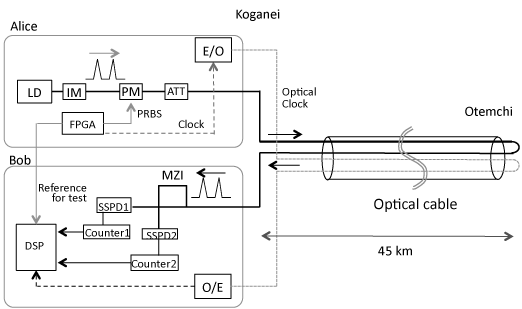
Fig. 1Experimental setup.
3. Preliminary results
Free-run operation performance was evaluated over 264 hours in the end of January 2012. Temperature of the MZI circuit was under feedback control such that quantum bit error rate (QBER) did not exceed 4 %, which was the threshold for the secure key distillation. Figure 2(a) shows the 1-hour average of the QBER(%) and the MZI temperature(deg.), where bar indicates the maximal and minimal values. Figure 2(b) shows the sifted key rate (bps) and the secure key generation rate (bps) for every one hour. In spite of 31-dB loss, achieved secure key generation rate is about 400 bps, which is half of the result in the field experiment for the plug and play QKD over 15-km [D. Stucki et al., New J. Phys. 13, 123001 (2011)] with APD single photon detectors. Although large fluctuation in the QBER degrades the secure key generation rate, automatic recovery was confirmed. We are now trying to find the optimal conditions for the feedback control and improve the middle-term operation performance.
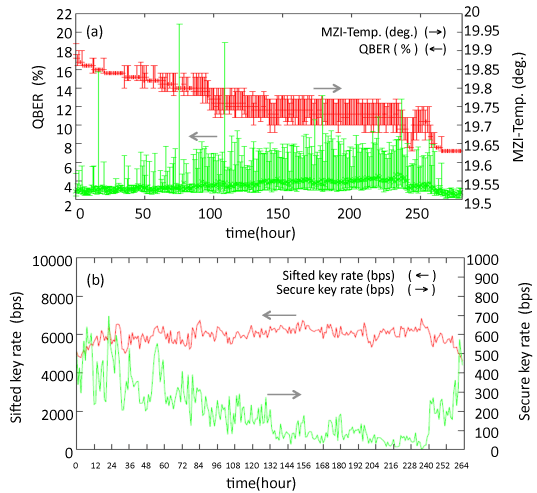
Fig. 2QBER, MZI-Temperature, sifted and secure key rate.
Extra information
Figure 3 shows the changes in atmospheric temperature and proportion of sunshine during 11 days of the free-run experiment. The operation performance does not seem to depend on the atmospheric environment. Figures 4(a) and 4(b) show the changes in the QBER(%) and the sifted key generation rate (bps) for 00:00-01:00 (night) and 12:00-13:00 (daytime) of 1 March, respectively. Short-term fluctuations are sensitive to the atmospheric environment.
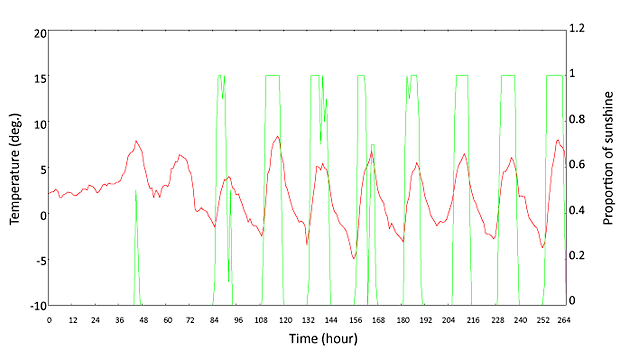
Fig. 3Atmospheric temperature and proportion of sunshine during 11 days of the free-run experiment.
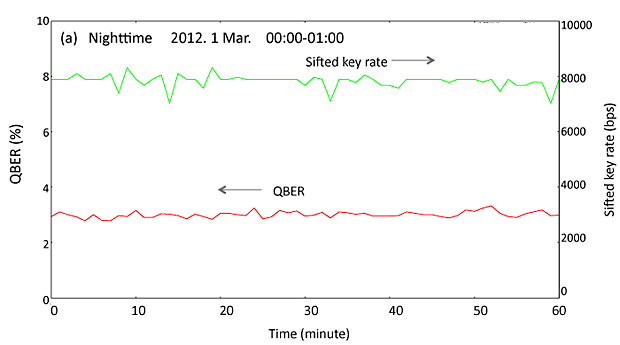
Fig. 4(a)QBER and Sifted key rate for 00:00 - 01:00 / 1 March 2012.
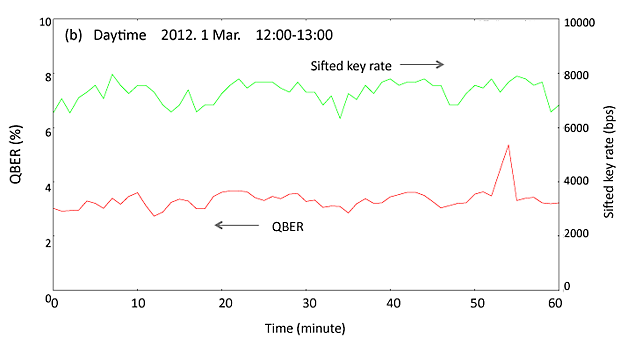
Fig. 4(b)QBER and Sifted key rate for 12:00 - 13:00 / 1 March 2012.